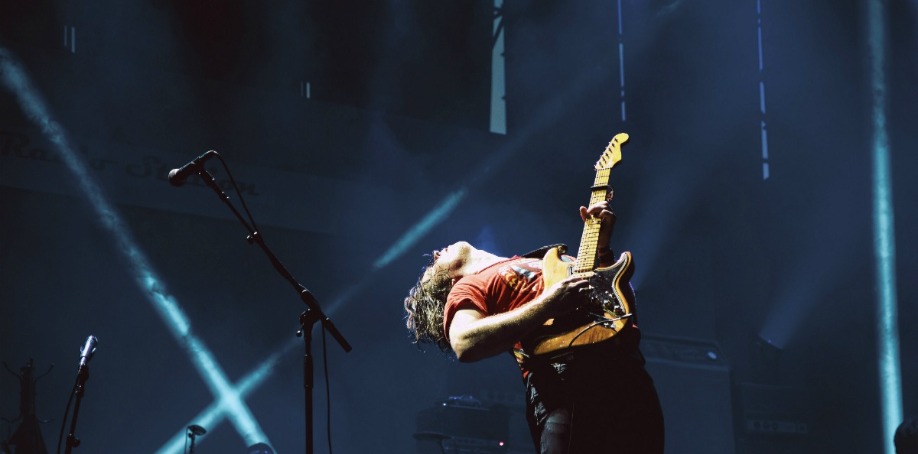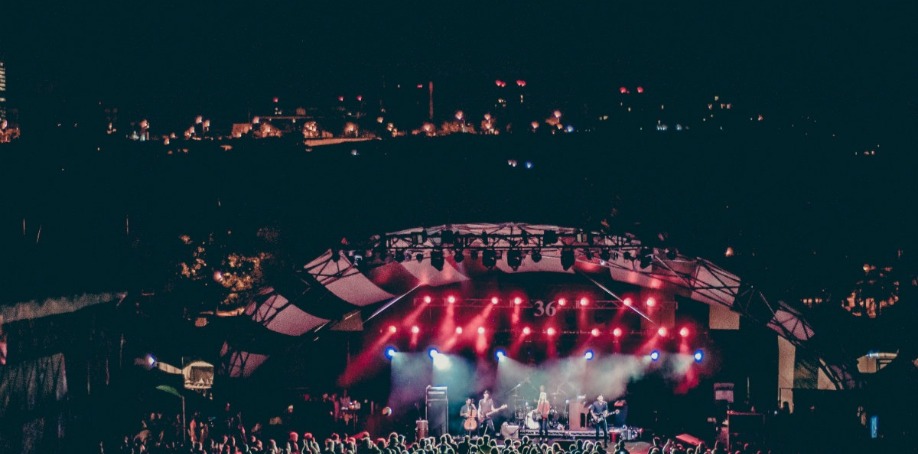
Video is one of the most popular content forms on the Web today. YouTube is the second most-visited website in the world, per its Alexa ranking; sites like Netflix, Hulu, and Vimeo aren't far behind.
The ease of creating, streaming and storing video online has allowed performers to break into their genre at all levels, Marianna Manson notes at Huck. It's also opened up the opportunity for arts, culture and entertainment venues to live stream performances, sharing them with audiences around the world.
Today, audiences can take in events like the Coachella music festival, opera at La Scala, ballet at the Bolshoi, or drum corps performances through DCI's FloMarching with a simple trip to their local cinema — or, in some cases, without ever leaving home.
How do the big venues do it? Here, we unpack the details of live event streaming, including major benefits (and challenges), considerations for integrators bidding on live stream projects, and case studies.
The Benefits (and Challenges) of Successful Live Streaming
Live streaming reaches a larger audience. Michael Beird and Erin Handel of BankersHub state that “travel budget” and “I couldn't be out of the office” were the top two reasons business conference attendees chose not to attend a live event. When events aren't business-related, concerns about being away from the office are even higher.
As media veteran Bern Rexer of MXPI tells AdWeek, live streaming offers one-take production, social media engagement among viewers sharing the experience (and the ability to monitor this engagement in real time), and increasing affordability for a wide range of venues.
While Beird and Handel note that webinars and webcasts help to bring content to those who can't attend an event in person, they're of little use in the performing arts, where the visual aspect of the performance is integral to the work as a whole. Live streaming, which pairs video with audio to share in real time, solves this problem — but not without challenges of its own.
First, getting an audience to a live stream can be tricky. In-person audiences must invest energy and effort in reaching the venue on time. Digital live stream audiences, however, have their attention divided by their ordinary routine, notes Rexer, which means that promotion is essential.
Second, live streaming is susceptible to both technical and human failures, says Fast Company's Jared Newman. “I assumed that live streaming's issues were caused by some fundamental technology constraint,” Newman says. “… It's easy to believe Internet technology can't keep up with the demands of modern viewers.”
However, the problem is often one of business, not bandwidth. Dan Rayburn of Frost & Sullivan tells Newman that failure to anticipate problems — like CBS's struggles identifying Grammy stream viewers' locations or NASA's issues with chunk encoding in its Mars live stream — often results in poor quality output. Integrators who can communicate technical issues in simple language to non-technically minded stakeholders stand a better chance of receiving the support they need to address these problems before they happen.

What Happens in a Live Stream?

The marketing, visibility and entertainment benefits of live streaming major arts and music events are well-documented, but even audiences who regularly consume live streamed content often know very little about how that content is delivered.
“Live streaming includes the onsite video production, live encoding, transmission or distribution to the viewers, and the web development or player consideration so the user can view the stream,” says Mark A. Robertson at Tubular Insights. “For each live streaming format and protocol you chose to encode — the viewers must have a compatible and capable device or player to view that stream.”
Goran Čandrlić at GlobalDots breaks down the process into four basic steps:
- A user visits a Web page that hosts access to the live stream.
- The Web page's server sends a message to a streaming media server for access to the file.
- The streaming server streams the content directly to the user's computer.
- The user's client software decodes and plays the file.
While a wide range of file formats are used in live streaming, the live-streamed data itself is typically restricted to one of three protocols: real time protocol (RTP), real-time streaming protocol (RTSP), or real time transport control protocol (RTCP).
For integrators and hobbyists alike, preparing the video or audio data gathered for streaming is often the easier part of the process, Gretchen Siegchrist of Lifewire says. The bulk of an integrator's attention is paid to how the audio and video that comprise the live streamed performance are collected, connected and maintained as the performance unfolds.
Unsurprisingly for integrators, the demands of an effective live stream system often parallel the demands of a high-quality AV over IP system, according to Ardan Audio. They also demand that integrators work closely with performance techs, audio and video specialists, directors, and other individuals in order to ensure that the “feel” of the performance is maintained, and that audio and video transmissions are connected effectively.
As a result, integrators often need creativity in their vision of a live stream system and in their ability to communicate that vision to artistically minded stakeholders, says Staging Connections. An understanding of the artistic demands of the performances to be live streamed can provide the perspective needed not only to provide outstanding live stream tools and coverage, but to communicate the value of the integrators' role to the client.

Case Studies
As live streaming continues to expand, integrators spot and seize more opportunities to improve the quality of live streams and to work closely with the artistic, cultural and entertainment venues that host them.
Here are just a few examples of how various events and media companies have harnessed the power of live streaming with the help of experienced AV dealers and integrators.
360 Degrees of Fashion: StreamShark's Fashion Week Live Streaming
Live streaming runway shows at Mercedes-Benz Fashion Week has been popular for several years, and AV professionals continue to push the envelope in this area. Together, Visual Domain and StreamShark recently provided 360-degree live stream coverage of a Fashion Week event in Sydney, harnessing the power of top-quality video and streaming technologies to provide a more thorough and vibrant look at an art that demands three-dimensional coverage.
International Film With a Twist: Nadaje and the International Film Festival Rotterdam
Live streaming an international film festival may sound simpler than live streaming a play, opera or symphony. But for the International Film Festival Rotterdam, the challenge wasn't sharing the films, but allowing remote audiences to interact with directors, actors and other interviewees present in Rotterdam. Nadaje Broadcasting stepped up with a two-camera system and the audio tools necessary to make connections with interviewees and far-flung audience members possible.
Commencement: HB Communications Shares the Nation's Luminaries
College and university graduations often represent a major turning point in the life of those who graduate — and an event that nearly every family member, friend and mentor wishes to attend in support of their graduate. Limited venue space, however, makes it difficult or impossible for everyone who wants to attend a commencement to do so.
Enter live streaming. HB Communications has used its HB Live system at a number of prominent Connecticut university graduations, allowing families to experience not only the joy of watching a loved one receive that hard-earned degree, but also sharing the commencement addresses given by world leaders like Barack Obama or Tony Blair.
Integrators placing bids on commencement ceremonies can learn from HB's example, which focuses not only on the company's commitment to outstanding results, but also its understanding of the security and safety concerns posed by a commencement and how to address them effectively.
Streaming America's Pastime: Ford AV Supports BBVA Compass Stadium
Baseball games have been broadcast practically since the technology was available. Now, BBVA Compass Stadium in Houston, Texas, has updated its live stream and broadcast capabilities with assistance from Ford AV. The stadium's updated AV system offers multipurpose capabilities, including an HD video production suite, broadcast cabling infrastructure and multiple connectivity options.
Explore Here, Edit There: Discovery Channel's Move to Virginia
Because AV over IP options allow high-quality video and audio to be transmitted via Internet connections, production suites for live stream and broadcast events no longer need to be on site.
CEI and the Discovery Channel took advantage of this fact in a project to move Discovery Latin America's production to Virginia. The projects' goals included centralizing playout resources, improving efficiency and creating opportunities for future channel expansion, according to CEI. The resulting suite allows Discovery staff to work together more closely while maintaining the high standards of audio and video fidelity the channel is known for.
Live streaming offers a future not only for the visual, performing and pageantry arts, but also for integrators who can combine an understanding of these artistic forms with the expertise to provide a high-quality experience of them via cutting-edge audiovisual tools.
Images by: Jorge Gordo, Larisa Birta, Redd Angelo


